From the December 2022 issue of Apollo. Preview and subscribe here.
In recent years, 20th-century British art has been experiencing a significant revival in scholarship, curating and publishing, with outstanding exhibitions, books and catalogues that make it possible to teach and enjoy British art of this period more fully than ever before. With all this renewed attention, however, the painter Ruskin Spear (1911–90) has been overlooked. In spite of the high regard in which he was held in the 1950s, by the late ’60s his reputation was dwindling and he had fallen out of fashion. This book is a meticulous piece of art historical rescue; a bid to replace Spear in the new histories of British art.
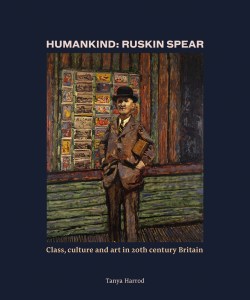 Spear’s art comes from a tradition of figurative painting that belongs to a Victorian concept of the British School of Art, beginning with Hogarth and continuing with William Powell Frith. His work is also indebted to Walter Sickert and, through Sickert, French Impressionism. Spear’s art is figurative rather than abstract, everyday rather than universal, and whimsical as opposed to sublime. His subjects – street scenes, pub interiors, corner shops, domestic spaces, portraits, shop signs and advertising images – evoke a humorous and unapologetically quotidian image of post-war Britain that is working class and resilient. As such, he was swimming against the tide of modern abstract art and affiliating himself with a realist tradition of socialist art.
Spear’s art comes from a tradition of figurative painting that belongs to a Victorian concept of the British School of Art, beginning with Hogarth and continuing with William Powell Frith. His work is also indebted to Walter Sickert and, through Sickert, French Impressionism. Spear’s art is figurative rather than abstract, everyday rather than universal, and whimsical as opposed to sublime. His subjects – street scenes, pub interiors, corner shops, domestic spaces, portraits, shop signs and advertising images – evoke a humorous and unapologetically quotidian image of post-war Britain that is working class and resilient. As such, he was swimming against the tide of modern abstract art and affiliating himself with a realist tradition of socialist art.
As Harrod demonstrates, Spear was not simply a London artist, he was a Hammersmith artist. This area of west London, where the artist was born, provided many of the subjects that Spear painted, the streets and the characters that populated works such as Hammersmith Broadway, Rush Hour (1953) and Friday Night (1958). Spear’s career was complex and, at times, contradictory. Despite his commitment to socially engaged art, he was also deeply connected to the Royal Academy of Arts; he was a war artist as well as an ardent pacifist. The majority of his figure subjects and portraits are male and, for this viewer at least, there is an underlying hostility in a number of his images of women, along with abusive personal relationships, which Harrod might have addressed more fully and critically.
Spear was born into a skilled working-class family and relied on scholarships to fund his artistic training. In the 1920s he attended Hammersmith School of Art, which had a traditional curriculum based on drawing from casts, anatomy, perspective and figure painting. Further financial support allowed him to attend the Royal College of Art. William Rothenstein, head of the painting school and principal of the college, was an important influence on Spear. Harrod describes Spear’s art in his student years as ‘painted in a nineteenth-century context, and as if Cézanne, let alone Cubism, had not altered the course of early twentieth-century art’. It was in this period that Spear also became a member of the Artists’ International Association (AIA) – a left-wing group that organised exhibitions and other activities to support radical causes – thus consolidating his commitment to socialist politics and pacificism. The subject of the cultural politics of the 1950s and the peace movement is discussed in a later chapter that productively sets Spear in the wider context of British socialist and communist art.

Abstractions 1954 (1954), Ruskin Spear. Private collection. © Estate of Ruskin Spear. All rights reserved/Bridgeman Images
Because of a disability resulting from childhood polio, Spear was ineligible for military service in the Second World War. He was adaptable and pragmatic during the war years, working for the ‘Recording Britain’ project and the War Artists Advisory Committee (both under the auspices of Kenneth Clark), as well as making drawings for pacificist groups, teaching in art schools and even producing fashion sketches for Vogue.
In 1942 Spear was elected a member of the London Group and in 1944 he became an Associate Royal Academician – one of the youngest ever to be elected. By the second half of the 1940s much of his favoured imagery had already been established. Man Selling Postcards (1946) depicts a bowler-hatted figure, hands in pockets and cigarette hanging from his mouth, standing in front of a display of threepenny postcards, landscape views and the ‘saucy’ seaside cards that were so popular at the time. While on the one hand, this figure belongs to the tradition of street ‘types’ found in Victorian genre painting, Spear’s interest in advertising and popular culture also links him to Pop art and the work of younger British artists such as Peter Blake. His post-war imagery was summed up by the art critic Eric Newton as ‘the world of half-pints and dart-boards’. This world was also well represented in British films of the period (most notably in productions by Ealing Studios) but we must wait for another study to explore the strong visual and narrative connections between post-war British film and art.
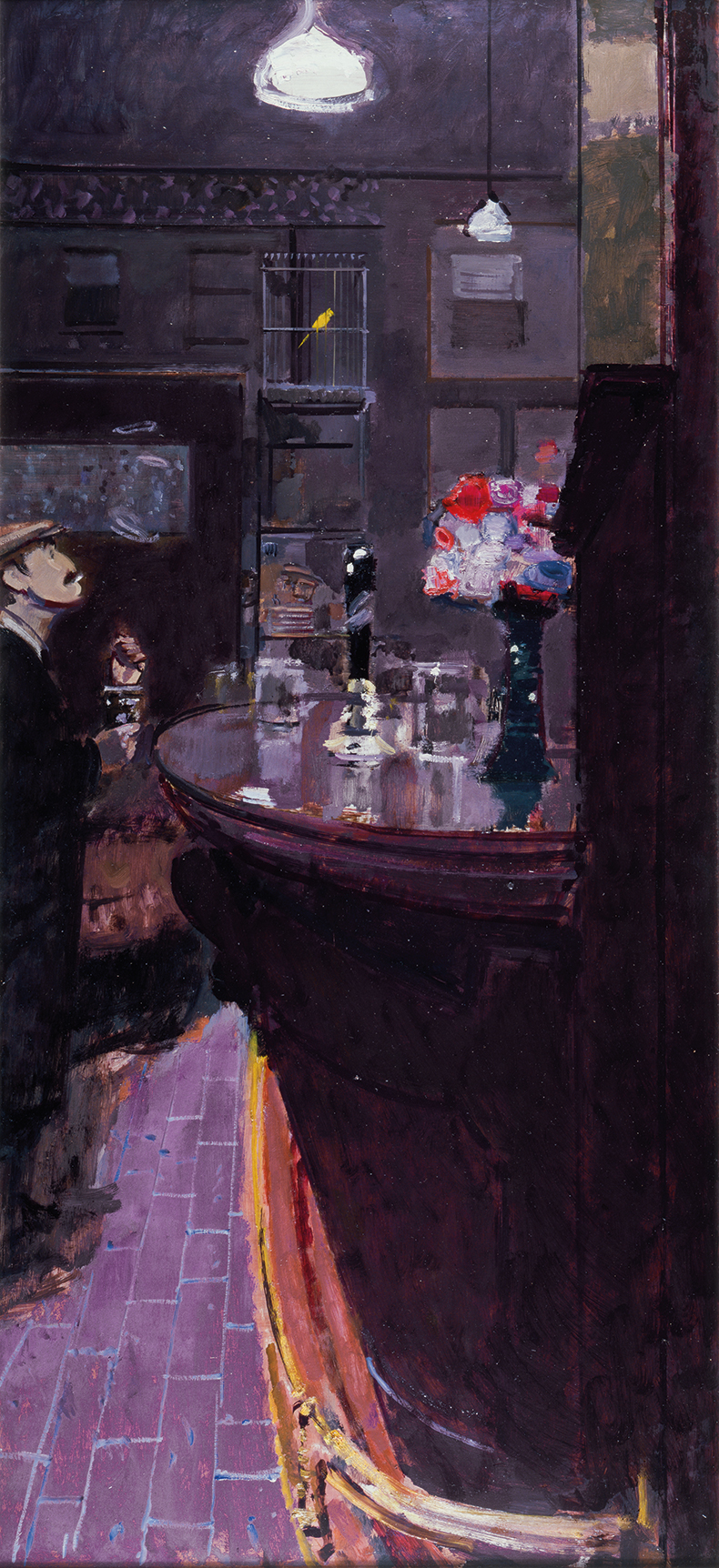
Alf and the Canary (Brown Ale) (c. 1949), Ruskin Spear. Harris Museum and Art Gallery, Preston. © The Estate of Ruskin Spear. All rights reserved/Bridgeman Images
Harrod describes her approach to Spear as a social history of art. Up to a point this is true; in the main, however, this is a fine monograph written in a clear and accessible style. There is some social and political context, but the net could have been spread more widely. For example, a chapter on Spear’s satirical pictures includes Success Story, a painting of 1954, depicting an ostentatiously wealthy couple standing beside a large, gleaming, golden car. As a satire of ‘never had it so good’ consumerism, it is clearly inspired by the notorious Lady Norah Docker, whose conspicuous consumption was constantly reported in the press at the time and included the purchase of a ‘Golden Daimler’. A social history of art might have teased out some of these connections, but this should not take away from what is a useful counter-narrative to the concentration of recent work on the Independent Group and Pop art, and an important study of a neglected artist.
Humankind: Ruskin Spear. Class, Culture and Art in 20th Century Britain by Tanya Harrod is published by Thames and Hudson for The Estate of Francis Bacon Publishing.
From the December 2022 issue of Apollo. Preview and subscribe here.
Unlimited access from just $16 every 3 months
Subscribe to get unlimited and exclusive access to the top art stories, interviews and exhibition reviews.

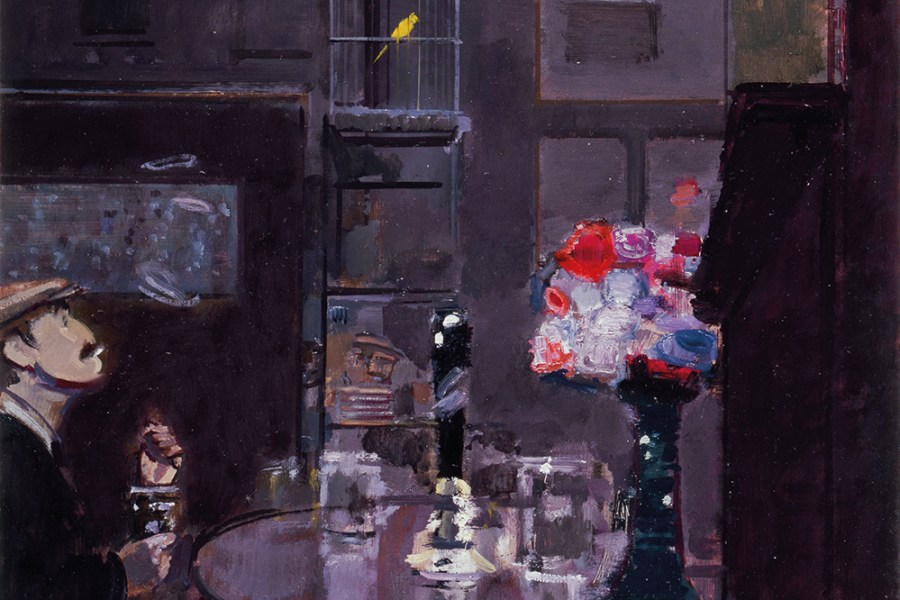
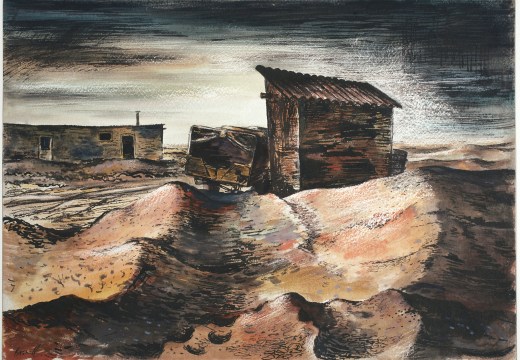
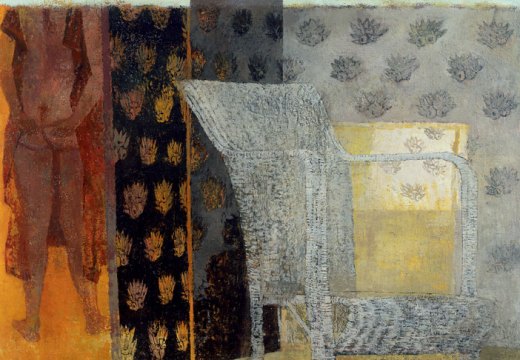
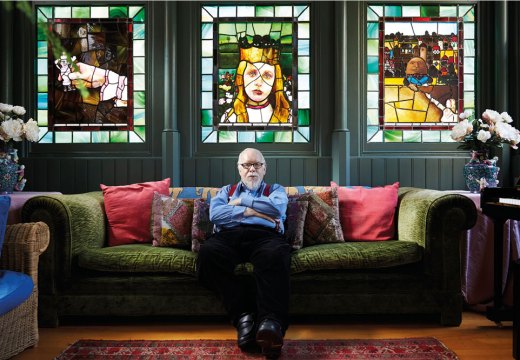









![Masterpiece [Re]discovery 2022. Photo: Ben Fisher Photography, courtesy of Masterpiece London](http://www.apollo-magazine.com/wp-content/uploads/2022/07/MPL2022_4263.jpg)
It’s time for the government of London to return to its rightful home